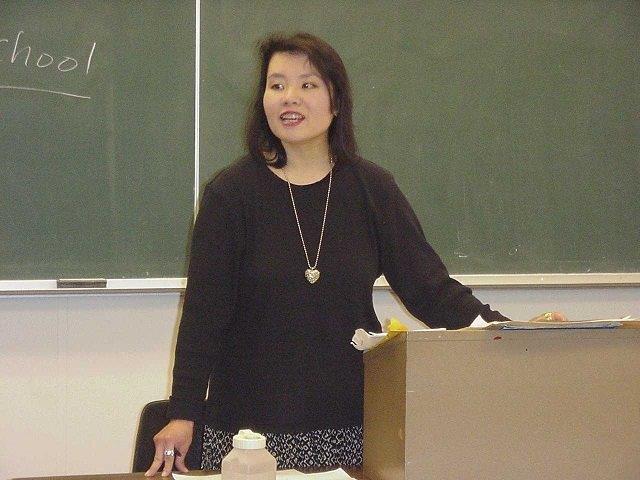
Q & A with Japanese Language Instructor Risami Nakamura-Lambert
Learning the basics of a language often comes naturally while traveling. Not through drills, but through casual interaction and attempts at conversation. Risami Nakamura-Lambert’s Conversational Japanese I class is for beginners with little or no Japanese background as well as those who want to brush up on speaking skills. Conversational Japanese II continues to build on those conversational skills while introducing verb conjugations. In our Q and A, she shares her approach to teaching, the importance of maintaining language learned, and how this will all translate to an online classroom.
When did you first discover you had a fondness for teaching and what inspires you in your work?
I was tutoring students who were taking Japanese classes when I was in a college. That was the beginning of  my teaching career. After I graduated from The University of Hawaii, I taught Japanese and Social Studies to native Japanese 7th graders, and Math to 4th graders in a Japanese school. The teaching program was based upon Japan's Ministry of Education standards, even though the school was in the state of Hawaii.I truly enjoyed teaching enthusiastic younger students.
my teaching career. After I graduated from The University of Hawaii, I taught Japanese and Social Studies to native Japanese 7th graders, and Math to 4th graders in a Japanese school. The teaching program was based upon Japan's Ministry of Education standards, even though the school was in the state of Hawaii.I truly enjoyed teaching enthusiastic younger students.
After I moved to Seattle, I had an opportunity to teach Japanese in the program called Japanese for Professionals at The University of Washington where I was inspired by professors and lecturers in the program.
What do you look forward to most when teaching this class?
Meeting each student and interacting with them. (Helping) them act like Japanese. And the most important: having fun with my students.
What can students expect from your class now that it’s being offered via Zoom?
I am confident that using Zoom we can preserve many of the class activities such as practicing pronunciation, engaging in partner participation, and presenting language skills. Students will continue to receive valuable feedback from me.
What are some concerns students might have about taking a language class online and how can you address those in your teaching?
Students might be concerned about the impersonal nature of Zoom, but by encouraging students to leave their camera and audio on, we will try to recreate the classroom experience. We will use Zoom features such as breakout rooms to facilitate group work.
Tell us about your teaching technique. You’ve stated it is based on the English speaker’s point of view. Please give some examples of this and how it works.
I start with reviewing the previous lessons with my students since I encourage them to review what they have learned instead of studying ahead. I check each one of them throughout the class activities. For example, one of the most difficult sounds in Japanese that English speakers make is “tsu”. I remind them to pronounce it as in “2 cats”.
What are some fundamental differences between English and Japanese languages of which a new speaker should be mindful?
Frequently there would be no subject of the sentence if it is understood between the speaker and the listener. There would be no accent in pronunciation but higher and lower pitch in Japanese.
What are some typical challenges English speakers face when learning Japanese and what kinds of solutions have you developed to assist them?
Each of the 5 vowels have only one sound; do not sound the letter “I” as “ai” nor letter “a” as “ei.” Some confusing but critical pronunciations are written in the upper case clearly in my textbook.
 How do you go about incorporating elements of Japanese culture and customs into your curriculum? Which elements do you feel are the most beneficial for an English speaker to learn?
How do you go about incorporating elements of Japanese culture and customs into your curriculum? Which elements do you feel are the most beneficial for an English speaker to learn?
In my initial class, students will learn how to bow properly and they can use bowing with greetings when they introduce themselves.
What makes for a successful student in your Conversational Japanese classes and what do you hope your students will take away with them?
To focus on reviewing what you have learned in the class is the key to being successful rather than studying ahead because it would be more difficult to correct the wrong pronunciation than learning the right one from the beginning. You will learn from your mistakes; it is good to make mistakes in the early stages, but they have to be corrected right away.
Use it or you will lose it—especially in foreign languages. Successful students are willing to mimic, to repeat, and to apply what they’ve learned.
Risami Nakamura-Lambert has been teaching Japanese for over 20 years after graduating from The University of Hawaii. Learn more about her Conversational Japanese I and Conversational Japanese II classes.
Photo Credit: bobby hendry